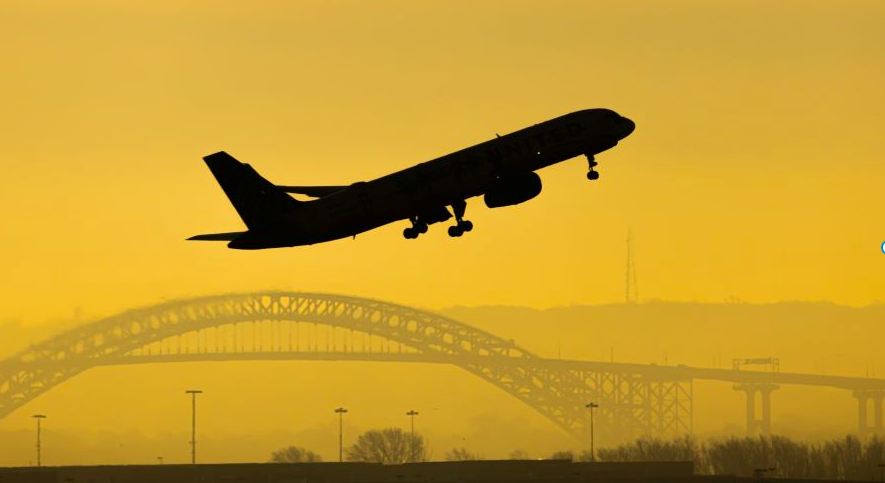What do you think when you hear the words “Zero Waste in Aviation”? Impossible? Can it be done? Wegozero is here to show you that it’s easier than ever before!
The status quo of waste in aviation
When we are thinking of the current situation of waste in aviation there are several challenges we are facing.
Each passenger on an airplane produces between 0.52 to 1.81 kg of waste. With an annual average – as of 2022 – of 33 million flights, significant implications can arise for the waste management systems in place. According to a recent survey from the International Air Travel Association (IATA), up to 6.1 million tonnes of cabin waste are generated every year. A prediction based on current data, forecasts 10 million tonnes of cabin waste by 2030. Not only is this challenging to handle but also costs the aviation industry USD$ 927 million to do so. Furthermore, approximately 20-25% of cabin waste can be prevented as they represent foods and drinks that remain unconsumed. Considering that the catering industry amounts to USD$ 8.5 billion, if certain practices were to be re-evaluated the monetary savings could be diverted to other services in need.
Therefore, ambushing the aviation industry, rather swiftly, is a persistent problem. The aforementioned cabin waste generated is just one of the four main variables requiring attention in the journey towards adapting to current environmental legislations worldwide. The following are the three additional variables:
The legislation
Despite sustainability being at the forefront of innovation, with 75 percent of International Catering Waste (ICW) being recyclable (excluding the cleaning waste), only 20 percent of it is ultimately recycled. The majority is either incinerated or buried in authorized landfills. This is attributed to the very strict policies that govern their disposal. Nations with an advanced agricultural sector such as the European Union, the United States, and Australia, are required to protect their agricultural welfare and minimize contamination. For instance, the European Union has grouped in-flight waste into two categories.
- Inflight-waste Category 3 (CAT3)
Is branched into two ‘mixes’; a) inorganic recoverables (e.g. plastics, cans & cartons) and b) organic waste (including animal by-products) and waste that cannot be easily separated (e.g. napkins & fabrics), generally describes the ICW originating from inside the EU.
- Inflight-waste Category 1 (CAT1)
Category 1 (CAT1) represents the same ICW as CAT3, with the only difference being their place of origin coming from outside of the EU.
Hence, due to the high-risk potential of CAT1 – both for humans and the environment because of its origin – it is subjected to much stricter regulations. At the end of each journey, both categories will be consolidated in one bag. When the plane arrives at the airport they will be transferred to the nearest sorting facilities and while some CAT3 waste will be recovered, recycled, and repurposed; CAT1 waste will either go straight to the landfill or be incinerated.
The capacity problem
Apart from the strict outdated policies that govern the disposal of cabin waste, research has shown that the passenger load on airlines is said to increase by 7% each year through at least 2030. Should that happen in the aviation sector, it could skyrocket the amount of unrecoverable and wasted catering supplies to above the projected values.
The volume problem
Last but not least, the oversupply of meals during both short-haul and long-haul flights remains a normal practice for airlines. When airlines offer cabin food, sometimes the passengers will accept it without actually wanting it. This food remains unconsumed, and often ends up in the waste cycle. These practices desensitize the passengers from being aware of the environmental risks at hand.
Is Zero Waste in aviation possible?
As with everything, the aviation companies need to start small-scale for a smooth zero-waste transition. Any changes that can be achieved without meddling with the waste policies in place would be an optimal first step. Minimizing single-use plastics and choosing biodegradable containers to serve foods and drinks are easily achievable, followed by replacing paper tags and printed boarding passes with digital ones. This also creates positive feedback for today’s youth who are trying to live a more sustainable and circular lifestyle.
Two ways of reducing waste are the pay as you go model offered from airlines as well as to change the consumers mindset towards more circular approaches.
Pay-as-you-go
A pay-as-you-go system adopted by low-budget companies is sometimes frowned upon by certain consumers, but it is a great way to monitor food overproduction. Only by doing this, airlines can save up to USD$ 3 billion worth of unconsumed products. The savings will increase as they would also pay less for landfill taxes regarding waste collection and disposal.
Sustainable customer behavior
However, the passenger’s behavior is also key for enabling change. When the passengers do not have a complete understanding of in-flight catering and its environmental implications from cradle-to-grave, they oversee the problem. Therefore communication of waste practices from the airline to the consumers is important. A passenger’s approach is also attributed to his/her background, allowing for decision making such as refusing to receive food that would not be consumed and just thrown afterwards.
Still, airlines face a bigger challenge. Many jurisdictions lack robust recycling systems for in-flight waste. This makes cabin waste off-loading difficult as they are not managed sustainably or safely, the waste just “all goes into the same place”.
Nevertheless, it is something that needs to be addressed and requires pivotal reforming both on a consumer and a merchant level.
Wegozero can help any type of business to set achievable zero waste goals! Book your free call here:

